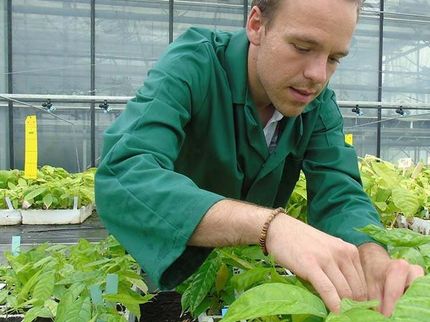Gene shear protects barley
Advertisement
viruses can cause major crop losses in cereals. With the help of the Cas9 gene shear, it has now been possible to protect winter barley from future threats.

Symbol image
Comupter generated Picture
Genome editing holds great promise for improving crop breeding to meet the challenges of climate change, disease resistance and more sustainable agriculture. A research team led by the IPK Leibniz Institute has now succeeded in modifying a gene in barley using the Cas9 gene scissors in such a way that new resistances to significant viruses are available for winter barley. The results were published in the "Plant Biotechnology Journal".
In addition to fungi and insects, viruses are also serious pests of crop plants. In cereals, viruses that are transmitted to plants via microorganisms in the soil are becoming increasingly important. In the case of barley, these are primarily barley yellow mosaic virus (BaYMV) and mild barley mosaic virus (BaMMV). Both are transmitted to young seedlings of winter barley in the fall and can cause yield losses of up to 50 percent.
Resistance breeding plays an important role in the fight against these pathogens. Although almost all current winter barley varieties are resistant to these viruses, some strains of the virus have already been able to overcome existing resistance through genetic adaptation, so that widespread breakthrough of natural defenses is only a matter of time. Given the tediousness of breeding measures, there is therefore an urgent need to identify new sources of resistance and to develop them for breeding via accelerated procedures.
In search of such new resistances, a research team led by the IPK Leibniz Institute examined material from the institute's gene bank. In 2014, they found what they were looking for in some of the old landraces and wild relatives of cultivated barley. "These investigations revealed that the gene PDIL5-1, which is involved in the formation of 3-dimensional protein structures, also plays a central role in the resistance of plants to these viruses," explains Robert Hoffie from the "Plant Reproductive Biology" working group. This involves a so-called susceptibility factor of barley. The host-dependent viruses use this to replicate in plant tissue. "A crucial finding for us was that resistant genebank material contained variants of the PDIL5-1 gene that had lost their function due to mutations and thus could no longer be used by the viruses for their reproduction," says the IPK scientist and first author of the publication.
However, crossing such resistance-mediating gene variants into existing breeding material of European winter barley is laborious and time-consuming. "Therefore, we used the Cas9 gene scissors to knock out the PDIL5-1 gene in two susceptible barley varieties by targeted mutagenesis just as in the resistant landraces, thus achieving success much faster and without any genetic changes in the barley varieties beyond that," says Robert Hoffie. The results were more than promising. "Not only were the targeted plants resistant to barley mosaic virus (BaMMV) infection in the greenhouse trial, but there were no negative effects on growth or yield."
"The study exemplifies how we can now use genebank material for plant breeding with extremely efficient and precise biotechnological tools such as the Cas9 gene scissors," comments Dr. Jochen Kumlehn, head of the study and head of the "Plant Reproductive Biology" working group. At the same time, the new findings also open up further avenues of research. For example, it can be assumed that the modification of PDIL genes can also lead to virus resistance in other plant species.
Note: This article has been translated using a computer system without human intervention. LUMITOS offers these automatic translations to present a wider range of current news. Since this article has been translated with automatic translation, it is possible that it contains errors in vocabulary, syntax or grammar. The original article in German can be found here.



























































